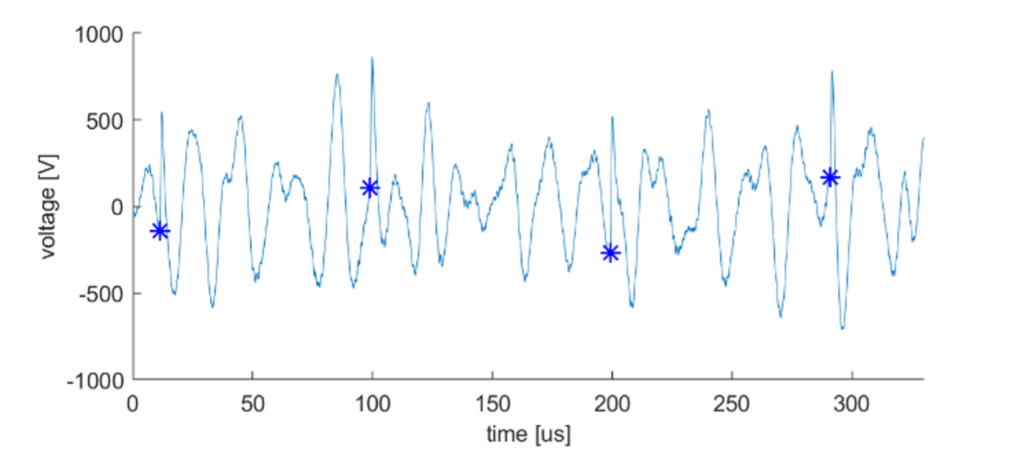Denoising in Partial Discharge Monitoring: The Key to Accuracy
If we are talking about partial discharges, there are two different types of diagnostics from the proper diagnostic action point of view. If the object under diagnostics is out of order, we talk about off-line (or trial) diagnostics. If the object is in operational order, we talk about on-line (or functional) diagnostics.
Due to the fact, that very often, there is a significant difference in testing conditions if the object is/is not in order (insulation is/is not damaged), the different kinds of sensors, analytical methods, and evaluating criteria are used in practice.
It can even happen several diagnostic values cannot be measured in out of order state, or, in the opposite, if the object is in operational order. Let’s explain it on medium voltage (MV) cable line.
Testing Partial Discharges on Medium Voltage Lines
In the case of off-line partial discharge (PD) measurement on a cable connection, the cable connection is disconnected from the rest of MV system, and it is excited by external non-discharge supply, while PD activity is measured. Other sources of PD and prospective power system disturbance are thus eliminated.
The situation is complicated during the on-line measurement. MV cable connection is situated in normal operational conditions, which means that other PD sources remain active, including prospective disturbance. This is the main problem at polymer (XLPE) MV cables.
Their ordinary operation discharge activity reaches the order of magnitude pC, which could be overlapped by another source of PD, or disturbance. It thus has to be taken into account at the measurement chain proposal, and it is necessary not to underestimate the proper sensor selection.
A well-chosen sensor will provide a high-quality signal, which is then processed by the measuring device. But even the most perfect sensor cannot rid us of all interference and noise, so one of the tasks of the measuring device is their elimination – also called denoising.
Denoising with PD Doctor: How Detection Works
The PD Doctor system combines FPGA and MCU technology for processing the signal coming from the sensors, which achieves high computing power capable of processing a data stream of up to 960Mbps. This unique and patented algorithm suppresses noise and interference in the sensed signal and at the same time reliably marks the beginnings and ends of individual discharges with a time resolution of ns.
The detection algorithm works on the principle of changing the character of the signal, which allows it to detect even PD discharges whose amplitude is smaller than the amplitude of the surrounding noise.

ModemTec is constantly working on improving its technology for measuring partial discharges. The second generation of PD Doctor supplements each detected partial discharge with a set of auxiliary descriptors, which will then be evaluated using artificial intelligence. This will ensure their classification into groups, elimination of residual noiseand synchronous/asynchronous interference, and evaluation of the status, severity, and progress of a possible malfunction.
Benefits of Effective Denoising in PD Monitoring
As PD Doctor is an online monitoring system, it provides constant and full control over the health of the insulation, which is crucial for medium/high voltage equipment. This monitoring takes place under real conditions to which the equipment is exposed, eliminating the need to take the equipment out of service for preventive measurements.
Conclusion
Denoising is a critical factor in accurate partial discharge monitoring, particularly in online diagnostics where external noise sources are unavoidable. ModemTec’s PD Doctor system excels in suppressing interference, ensuring precise detection and classification of PD events.
With its AI-driven advancements, PD Doctor not only improves measurement accuracy but also enables proactive maintenance, reducing the risk of costly failures. As ModemTec continues to refine its technology, its denoising capabilities will remain at the forefront of reliable PD monitoring solutions.
